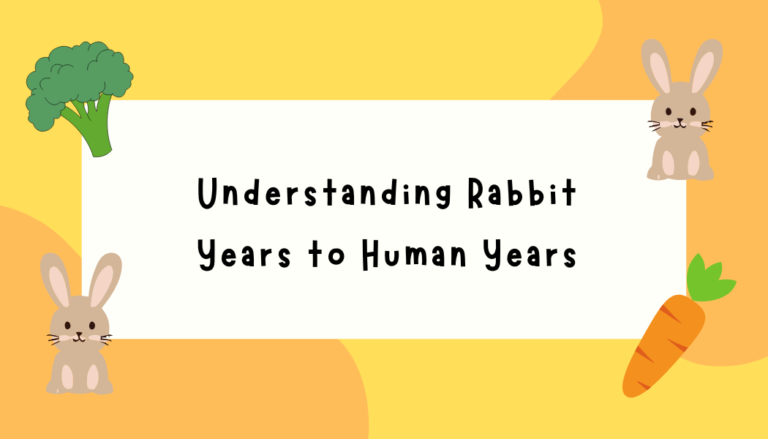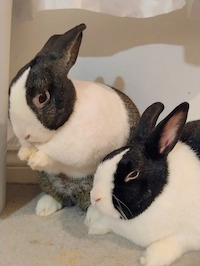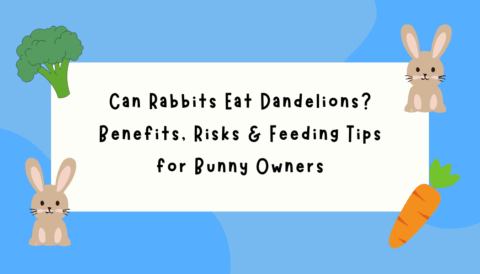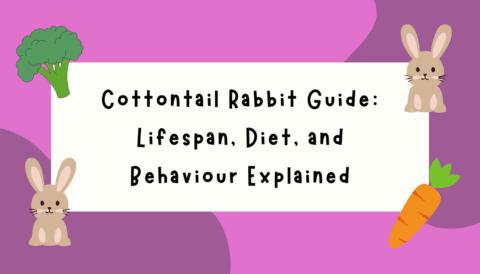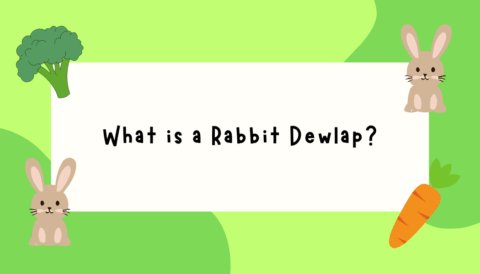Understanding Rabbit Aging: How Fast Do Rabbits Grow, Mature and Age?
If you’re a rabbit owner – or thinking about adopting a bunny – you’ve probably wondered: how do rabbit years compare to human years? Rabbit’s mature much faster than humans – your tiny baby bunny will reach adulthood in just a year!
Just like us, rabbits go through distinct life phases, from playful young kits to energetic adults to wise senior bunnies who need extra care. Understanding rabbit years to human years helps you anticipate their needs, recognise behavioural changes, and provide the best possible care at every stage of life.
Knowing where your bunny falls on the rabbit years to human years scale allows you to adjust their diet, exercise, and healthcare routine to keep them happy and healthy.
Table of Contents
Rabbit Lifespan Explained: How Long Do Rabbits Live Indoors vs Outdoors?
Understanding how rabbit years to human years work can help you provide the best care for your furry friends. The lifespan of a rabbit depends on factors like breed, genetics, diet, and living conditions.
Indoor rabbits – like Jet and Leo – typically live between 8 – 12 years, with some even reaching 15+ years. That means, in human terms, your bunny might be equivalent to living well into their early 100s.
On the other hand, outdoor bunnies usually face more risks such as predators, extreme weather and illness, which often limit their lifespan to around 5-10 years.
Whether your rabbit is indoors or outdoors, a well-balanced diet, regular vet check-ups, plenty of exercise, and mental enrichment can make a big difference in how many rabbit years they enjoy.
Providing high-quality hay, fresh vegetables, and safe chew toys can help prevent health issues and keep them active.
Rabbit Growth and Maturity Stages: Baby Bunny to Senior Rabbit Care Guide
Just like humans, rabbits go through distinct life stages, each with unique developmental changes. From tiny furballs learning to hop to wise senior bunnies enjoying a peaceful life, let’s explore the journey of a rabbit’s lifespan:
Newborn to 3 Months: Baby Bunny Development and Early Care Tips
When baby rabbits – also known as kits – are born, they are tiny, blind, and completely dependent on their mother. As they have no fur to keep them warm, kit’s huddle together in the nest, nestled safely in their mother’s fur-lined burrow. Their mother’s milk is packed with essential nutrients, rich in fat and protein, providing everything they need to grow strong and healthy.
At around 10 – 12 days old, their open their eyes, experiencing the world for the first time. Soon after, their ears perk up, allowing them to recognise sounds (or maybe even respond to their human). This is when they take their first wobbly hops, exploring their surroundings with growing confidence.
Personality traits start to emerge, too! Some bunnies become curious little adventurers, while others prefer to snuggle up with their littermates.
As they begin nibbling on solid food, introducing high-quality rabbit pellets can help support their growth and development. These pellets provide essential nutrients to ensure they transition smoothly from milk to a balanced diet.
Since baby rabbits are naturally curious, providing a safe rabbit playpen gives them a secure space to explore without getting into trouble. This is especially helpful during supervised playtime outside their enclosure.
3 – 6 Months: The Teenage Rabbit Phase – Behaviour, Care and Diet
Your bunny is no longer a baby – welcome to young adulthood! This stage marks a big shift in energy, behaviour, and even attitude. Just like human teenagers, young rabbits become more curious, independent, and eager to explore. My bunny, Jet, was always the bold one, hopping into new spaces without a second thought, while Leo took a more cautious approach, carefully assessing his surroundings before making a move.
At this age, some rabbits develop a “king of the castle” attitude, asserting their independence in charming but sometimes mischievous ways. You might notice your bunny testing boundaries, zooming around the house, or even getting a little sassy when things don’t go their way.
Since young rabbits have boundless energy, providing rabbit tunnels and hideouts keeps them entertained while giving them a safe space to retreat when they want some alone time.
Around 3 to 6 months old, rabbits reach sexual maturity, which can bring hormonal behaviours like:
- Marking territory (spraying urine or leaving droppings in specific spots)
- Mood swings (one moment affectionate, the next grumpy)
- Mounting and chasing (even with bonded bunny friends)
- Aggression or territorial behaviour (growling, lunging, or nipping)
This is where spaying or neutering comes in! Not only does it prevent unwanted litters, but it also helps calm these hormonal behaviours, making your rabbit more affectionate and relaxed. Many bunny parents (myself included) find that after neutering, their rabbit becomes easier to bond with and even more loving companions.
6 Months – 2 Years: Rabbit Adulthood – Training, Diet and Health Needs
By the time your bunny approaches their first birthday, they’re not just fully grown – they’re beginning to settle into their unique personality. This is such an exciting time for rabbit owners!
Some bunnies, like Leo, become affectionate lap pets, content to snuggle up with you, while others, like Jet, remain playful and independent, always on the move, exploring new spaces and hopping around with boundless energy.
This is a key bonding stage for you and your rabbit. They’ll start to recognise you as a trusted companion, seeking your attention or following you around with curiosity. At the same time, they may develop some funny little habits – perhaps a favourite nap spot, a special way of greeting you, or a quirky routine they do when they see you. Jet, for instance, used to sprint in circles before coming to my feet, a routine that never failed to make me laugh.
Watching your rabbit’s personality unfold is one of the most rewarding experiences as a bunny parent. Whether they’re the cuddly type or the curious adventurer, these little traits make every day with them unique and memorable.
As your bunny grows and matures, it’s important to adjust their diet to meet their changing needs. Young rabbits (under 1 year old) need a high-energy diet to support their growth. Alfalfa Hay is a great option for young bunnies as it’s high in protein and calcium, which are essential for healthy development. Along with fresh vegetables and pellets, this diet will help your bunny stay active and vibrant. Once they reach adulthood, switch to Timothy Hay.
Regular grooming also becomes important at this stage. A rabbit grooming glove helps reduce shedding and prevents fur from getting tangled or matted.
Trimming your rabbit’s nails every few weeks is another key part of their care routine. Using rabbit-safe nail clippers prevents overgrown nails, which can cause discomfort or even injury.
2 – 5 Years: Prime of Rabbit Adulthood – Health, Nutrition and Exercise
Once your bunny reaches two years old, they are considered a full-fledged adult rabbit. At this stage, your bunny has likely settled into their daily routines and developed a more stable temperament. No longer the hyperactive young bunny they once were, they’re still playful and enjoy social interaction, but their energy levels may be more balanced. Jet, for instance, is still always up for a good play session, but Leo tends to enjoy a more relaxed day, with plenty of nap time in between.
Even though they’re not as energetic as they once were, it’s important to keep their environment engaging. Bunnies are naturally curious and need mental stimulation to prevent boredom. Incorporating tunnels, chew toys, and even rearranging their play area every now and then can keep them entertained and help prevent destructive behaviours.
As your rabbit enters their prime years at two, regular vet visits become especially important. This is the time when health concerns like dental issues and weight management can become more prevalent. Rabbits’ teeth never stop growing, and a diet that’s too rich in sugary treats or too low in fibre can lead to dental and digestive problems.
Weight management is also crucial during this time. An improper diet can lead to obesity, which can cause a number of issues for your rabbit’s health. Make sure to provide a balanced diet, including high-quality timothy hay for fibre, fresh greens like romaine lettuce, celery, and parsley, and limited pellets to maintain a healthy weight.
5+ Years: Caring for Senior Rabbits – Aging Signs, Mobility & Health Care
5+ Years: Entering the Senior Stage
As rabbits age past five years, they officially enter their senior phase. While your bunny may not zoom around like they once did, they still love companionship, gentle pets, and a cosy, familiar environment.
Senior rabbits need extra care to stay happy and healthy. Keeping food, water and low-entry litter boxes within easy reach reduced stress on aging joints, while a calm, quiet space helps senior rabbits feel safe. Simple adjustments, like soft bedding, low-entry litter boxes and small ramps can help aging bunnies reach their favourite spots without the strain of jumping.
Older rabbits are more prone to arthritis, dental issues and weight changes, making regular vet check-ups essential for catching problems early. A diet rich in high-fibre hay supports digestion, and supplements like Oxbow Natural Science Multi-Vitamins and Joint Support Tablets can help with mobility, keeping them active and comfortable.
Although they may slow down, senior rabbits still need mental enrichment to stay engaged – gentle play, puzzle toys, and foraging games keep their minds sharp and spirits high.
One of the sweetest things about older rabbits is their deepened bond with their humans.
Many senior bunnies become even more affectionate, preferring cosy cuddles and quiet companionship. This is a time to cherish the love and bond you’ve built over the years, ensuring your furry friend enjoys a long, comfortable and happy life.
Rabbit Age Conversion Chart: How Old is Your Bunny in Human Years?
Rabbits mature incredibly fast, reaching adulthood in just 12 months. In that short time, they go from tiny, wobbly newborns to full-grown, independent bunnies.
Rabbits experience rapid growth in their first year, reaching the equivalent of 20 human years. After that, each additional rabbit year equals around 6 human years.
While there’s no exact formula for converting rabbit years to human years, we can estimate based on their growth rate, life stages and average lifespan.
Rabbit Years to Human Years Chart: Age Comparison and Life Stages
To make it easier, here’s a rabbit age conversion chart to estimate your bunny’s age:
| Rabbit Age | Human Equivalent | Life Stage |
| 1 month | ~ 3 years | New-born stage |
| 2 months | ~ 6 years | Early development |
| 3 months | ~ 9 years | Young bunny |
| 6 months | ~ 14 years | Teenager |
| 1 year | ~ 20 years | Young adult |
| 2 years | ~ 26 years | Adult |
| 3 years | ~ 32 years | |
| 4 years | ~ 38 years | |
| 5 years | ~ 44 years | |
| 6 years | ~ 50 years | |
| 7 years | ~ 56 years | |
| 8 years | ~ 62 years | |
| 9 years | ~ 66 years | |
| 10 years | ~ 72 years | |
| 11 years | ~ 78 years | |
| 12 years | ~ 84 years | |
| 13 years | ~ 90 years | |
| 14 years | ~ 96 years | |
| 15 years | ~ 102 years |
Whether your bunny is a playful youngster or a wise senior, understanding rabbit years to human years helps you provide the best possible care at every stage of their life. Since rabbits age differently than other pets, knowing their life stage allows you to tailor their diet, exercise, and healthcare, ensuring they stay happy, healthy, and binky-filled for as long as possible!
Rabbit Breeds and Lifespan: How Long Do Different Breeds Live?
Your bunny’s breed can influence their lifespan. Some rabbits stay by your side for over a decade, while others have shorter lifespans due to their size and health predispositions. Understanding how different breeds age helps you prepare for their unique needs and ensure they live a long, happy life
Smaller breeds, like the Netherland Dwarf, typically live 10 to 15 years. Their small size puts less strain on their joints and heart, helping them stay active and healthy well into their golden years.
On the other hand, larger breeds, such as the Flemish Giant, have a shorter lifespan of 5 to 8 years. Their rapid growth and heavier bodies can put stress on their joints and organs, making them more prone to health issues. That’s why providing a well-balanced diet, joint support supplements, and plenty of space to move is crucial for their well-being.
For all rabbit breeds, a well-designed rabbit cage or indoor rabbit enclosure can make a significant difference in their well-being by providing a comfortable and safe home environment.
Popular Rabbit Breed Lifespan Chart: Which Rabbits Live the Longest?
| Rabbit Breed | Average Lifespan | Rabbit Temperament |
| Holland Lop | 7 – 10 Years | Friendly, affectionate and great for families |
| Mini Rex | 8 – 12 Years | Playful, energetic, and known for their velvety fur |
| New Zealand Rex | 5 – 10 Years | Gentle and social, commonly kept as pets |
| Lionhead Rabbit | 7 – 10 Years | Adorable with a fluffy mane, but requires extra grooming |
| Flemish Giant | 5 – 8 Years | Sweet and docile, but needs plenty of space and care |
While cute looks and personality are important, it’s essential to consider a rabbit’s lifespan and care requirements before bringing one home. Some breeds, like the Mini Rex and Netherland Dwarf, can be lifelong companions for over a decade, while others, like the Flemish Giant, need specialised care due to size-related health concerns.
FAQs
Rabbit Years in Human Years: Understanding Your Bunny’s Age and Life Stages
From the energetic zoomies of a young rabbit to the gentle snuggles of a senior bunny, every stage of your rabbit’s life is a unique and special journey. Understanding rabbit years to human years helps you provide the best care at every phase, ensuring your furry friend stays happy, healthy and full of life.
By tailoring their diet, creating a safe and enriching environment, scheduling regular vet check-ups, and showering them with love and attention, your bunny can thrive well into their golden years – enjoying a long, healthy, and happy life filled with endless joy and binkies!
